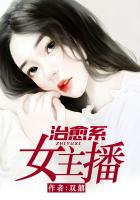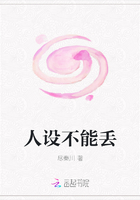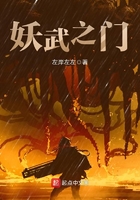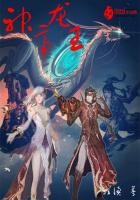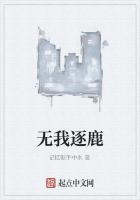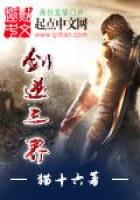As time progressed, Buddhism became more integrated with Chinese culture and beliefs. There has also been reciprocal influence among Buddhism, Taoism and Confucianism. The colored sculptures in Jin Temple (Shanxi) and Dazu Stone Carving in Sichuan fully embody the combination of Buddhism, Taoism and Confucianism. It is during this time that Buddhist statues display a change from the stiffness and alienation in the primary stage to calmness and maturity after combination with various kinds of culture.
Besides a belief in Buddhism, emperors of various dynasties also attached great importance to the construction of their tombs. Many important sculptures outside of tombs have been found since the Western Han Dynasty (206 BC–AD 25). The stone beasts outside of a tomb from the Eastern Han Dynasty best embody the spirit of the time. The basic forms of tombs were well established by the Wei and Jin dynasties. The scale of tombs reached the top during the Sui and Tang dynasties (581–907). Some sculptures imitated lucky animals that could protect people against evil spirits, such as stone beasts, tianlu (an animal with a single horn) and bixie (which has two horns). These became symbols of dynamic spirits and were place in imperial tombs construction after the Wei and Jin dynasties.
The pottery tomb figurine is also a profound and important part of Chinese sculpture. Various pottery tomb sculptures and sculptural beasts—from the terra-cotta warriors and houses of the Qin and Han dynasties to the tri-color glazed pottery of the Tang Dynasty—embody the characteristics of times. Regime changes and evolution of culture are also obviously integrated into sculptures of each time, such as the elegant bone and clear appearance of Wei and Jin Period pieces and the plump beauty of samples from the Tang Dynasty.
Chinese sculpture began to decline during the Ming and Qing dynasties. Generally speaking, even religious sculptures became mediocre. In spite of that, some great masterpieces appeared, especially painted clay sculptures. The Shuanglin Temple in Pingyao and the Qiongzhu Temple in Kunming have in their collections some of the most brilliant clay sculptures from the Ming and Qing dynasties. The Shuanglin Temple is famous for the Guanyin and Weituo statues and more than 2,000 vivid figures. The Qiongzhu Temple is known for the 500 Arhat statues, a perfect combination of religious and secular art. The development of painted clay sculptures was connected to the prosperity in arts and crafts during the Ming and Qing dynasties.
As one of the key art categories, classical architecture is closely related to the sculptural arts. Architectural styles and art forms change a lot from the Qin and Han dynasties to the Ming and Qing dynastie. Although the splendid palaces from the Qin and Han dynasties have turned to ashes, the eaves tiles and big hollow bricks still display the power of the mighty Qin. The eaves tiles decorated with four patterns associated to four deities and Chinese characters along with stone sculptures are representative sculptural achievements of the Han Dynasty and define the stylistic progress of style Chinese sculpture.
The architectural sculpture on palaces from the Sui and Tang dynasties show the cultural inclusion and confidence of the times. The Great Wild Goose Pagoda in Xi’an, a well-preserved Buddhist pagoda, is truly the best of the line carving works from the Tang Dynasty. Architectural sculpture during the Yuan Dynasty (1206–1368) is a mirror of the culture and the national strength of the times. Sculptures often have strong outlines but lack of spirit and cohesion. The architectural relics from the Ming and Qin are profound. The Imperial Palace in Beijing represents the level of achievement of architectural sculpture. It pays equal attention to ornamental and practical functions and is more exquisite than examples from previous dynasties.
Sculptural examples from folk architecture are also very prominent and mainly include brick sculptures and the woodcarvings, which are close to the folk culture. The smart “Muhura” and simple “Big Afu” are full of vitality of folk life.
Entering the 20th century, the traditional religious sculpture was in a declining stage in China. Although the small-sized folk sculpture was still flourishing, it failed to become the mainstream. Since the Xinhai Revolution (1911), the art of Chinese sculpture has made distinctive changes and development. The introduction of Western way of sculpturing was accepted by some of the newtype fine arts schools. The European classic and academic way and concept of sculpture gradually grew in China. From around the May 4th Movement in 1919 to the 1930s, more young people went to learn sculpture in the West. After these people returned home, most were engaged in the education of arts. Their efforts promoted the development of modern sculpture in China.
After the establishment of the People’s Republic of China in 1949, great changes have taken place to the sculptural art. Different fine arts colleges and universities set up sculpture department and sent students to study in the Soviet Union. Between 1940s and 1970s, there appeared a serial sculptural works that were full of revolutionary passion and the Soviet Union influence. These works not only had great changes in the way of sculpturing, but more importantly, their changes in the form reflected the formation of a new political stand and value. To date, China’s modern sculpture arts show various schools and concept, reflecting a pluralistic society and culture from one aspect.
Chinese sculptural arts developed their own style over time and managed to display aesthetic features and cultural concepts unique to ancient China. The development of Chinese sculpture parallels the history of the ancient Chinese culture and aesthetics. It is a visible witness to the cultural fusion and exchanges between the Hans and other ethic groups as well as between China and foreign cultures.







